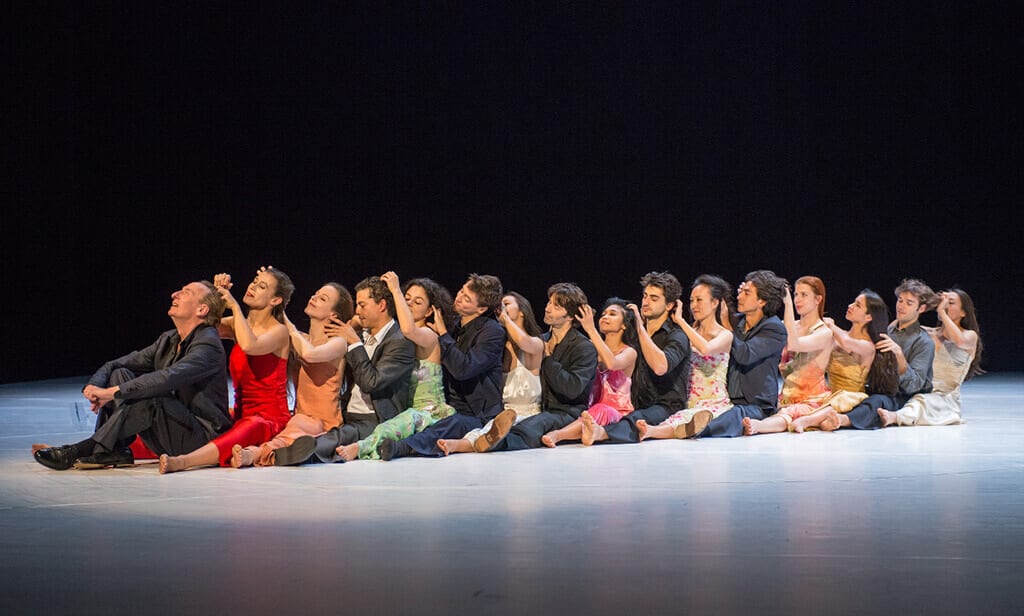It is nearly seven years since the death of Pina Bausch. Yet the founder choreographer of the Tanztheater Wuppertal in her last work ‘Como el Musguito en la piedra, ay si, si, si’ lives in every sinuous detail. Yet it is a disservice to her company, who perform with verve and attack, to see it purely as an elegiac tribute. This revival, featuring a mix of new dancers and company stalwarts, is rich in its playful, and sometimes, teasing provocation.
Inspired by the sights and sounds of Santiago de Chile, ‘Como el Musguito en la piedra, ay si, si, si’ celebrates youth, passion and longing, set against a gritty Latin-American mix which appear like a series of snapshots or vignettes, between men and women. The style-mix is eclectic – rock, folk, electric with latinised deep-song; while the punctum-pieces – where a scratch of the head, a turn of a foot or a flick of a red scarf – add depth and attitude. The minutiae builds into a mesmerising whole, set on a jigsaw-like white stage, which cracked and fissured, suggests sun-baked streets or fractured dreams.
The women reign supreme, resplendent in satins, velvets and printed silks, design by Marion Cito. They tease and provoke: a woman lies across the legs of two young men and counts as they engage in sit-ups; a young woman casually applies make-up as water is poured over her head. Yet the dynamic diagonal of nine women and seven men playing with the hair of the person in front is a sensual set piece of pure pleasure; later re-packaged where men and women perform a series of carefree gestic poses to close the first half.
The choreography flicks, whips in tangential sequences. Every part of the body is used and each spatial dimension probed for theatrical, as well as sensory, possibilities; a mark of the Bausch style. The dancing is superb in both group and solo pieces, particularly in their quick-silver fluidity, while the theatricality spans slapstick, front-cloth antics, and ritual, processional pieces. Stones, water, trees and oranges prevail – falling with gravity – as bodies defy it.
‘Como el Musguito’ is a visual and theatrical feast with many shifts in tone from the broad-sweep of the tectonic, geometric plates – design by Peter Pabst – to the textual inclusions of poet, songwriter and political activist Victor Jara. ‘I have learned to live in the moment and I like it,’ says the woman in red. Temporally we must learn to enjoy the same and celebrate life through Pina Bausch’s best legacy; the dance.

